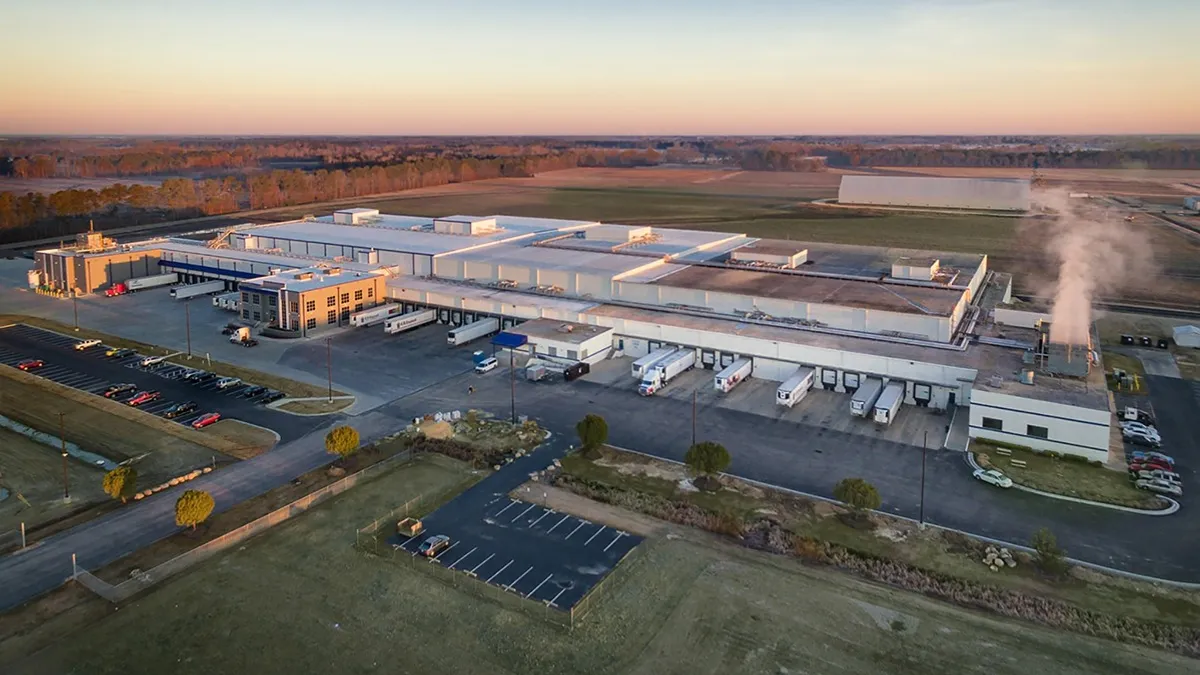Dive Brief:
- "Light industrial" warehouses, between 70,000 to 120,000 square feet, saw the most demand, lowest availability and highest rent growth in the industrial warehouse market between 2014 and 2019, according to a new CBRE report.
- While rents increased and availability decreased across warehouse categories from 70,000 to over 350,000 square feet, the study found availability for warehouses between 70,000 to 120,000 square feet decreased by an average of four percentage points over that five-year period and rents increased by 30%. Availability for warehouses over 250,000 square feet decreased by roughly three percentage points and rents increased by 16%.
- "We’ll continue to see strong demand for light industrial facilities as e-commerce grows, which in turn means we can expect to see additional strong rent growth for these warehouses," Chris Zubel, senior managing director of CBRE's industrial and logistics investors in the Americas, said in the release. "Light industrial is the hottest coal in the campfire."
Dive Insight:
As last-mile pressures mount, smaller urban facilities are becoming more attractive for firms as large as Amazon down to startup direct-to-consumer (DTC) brands. Close proximity to densely populated areas can make satisfying consumer demand for two-, next- and same-day shipping easier for retailers to achieve, particularly as e-commerce is expanding to include everything from on-demand luxury clothing rentals to fresh groceries.

The rapidly increasing demand for warehouse space has struggled to keep up with supply. The reasons behind the shortage, according to CBRE, are high urban land prices, the difficulty of construction on smaller parcels and a general lack of industry focus on light warehouses versus mega-facilities.
"In recent years, the headlines and attention have gone to the big-box distribution centers measuring 1 million sq. ft. or more to serve multistate regions," Matthew Walaszek, CBRE associate director of industrial and logistics research, said in a press release emailed to Supply Chain Dive. "But smaller warehouses often positioned in densely populated markets are some of the most coveted properties for investors and users alike. These are the true last-touch warehouses from which merchandise is delivered directly to customers."

The combination of high demand and higher rent potential has made the urban warehouse and industrial logistics market a prime opportunity for firms like Blackstone, which has said acquiring logistics real estate is the company's "highest conviction global investment theme today."
In March 2018, the company purchased 22 million square feet of logistics assets in a $1.8 billion deal with Canyon Industrial Portfolio. The facilities included in the agreement were currently used by Amazon, Coca-Cola, DHL, FedEx and others. And in August of this year, Blackstone was reportedly considering a deal to purchase 11 warehouses near JFK airport in New York City, near locations where Amazon was also rumored to be in the market for urban warehouse space, namely Brooklyn and Queens.
"As retailers continue to shorten delivery times and expand their last-mile footprints, we believe warehouses in dense population centers will continue to experience outsized demand growth," Nadeem Meghji, head of real estate Americas at Blackstone, said in a statement.














